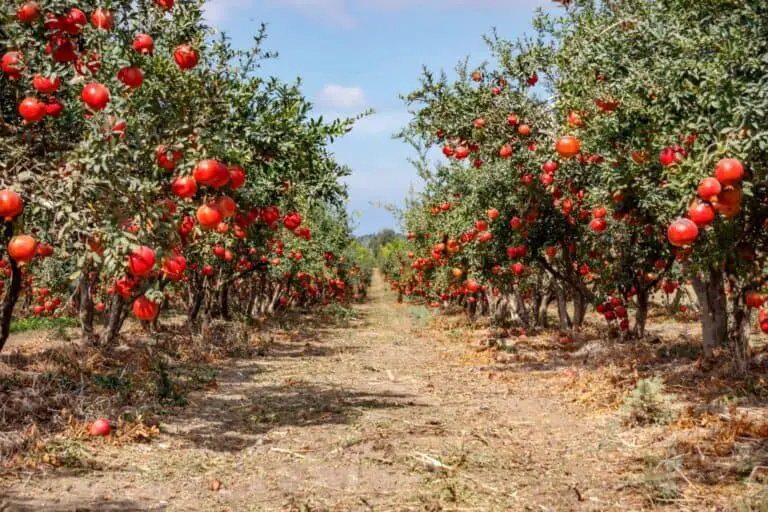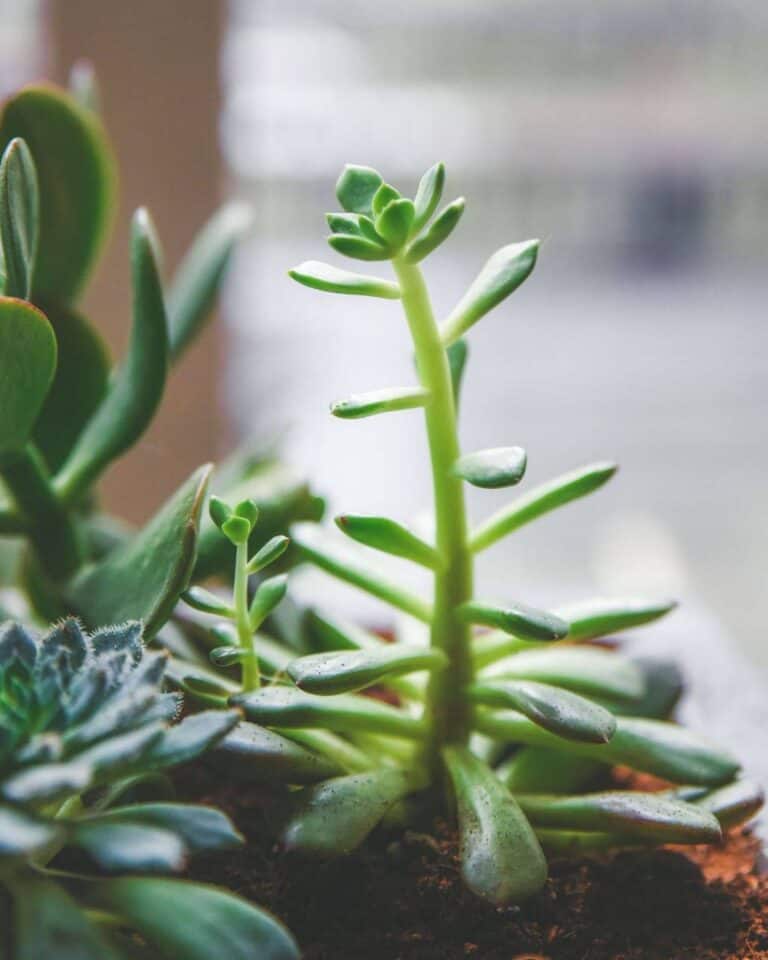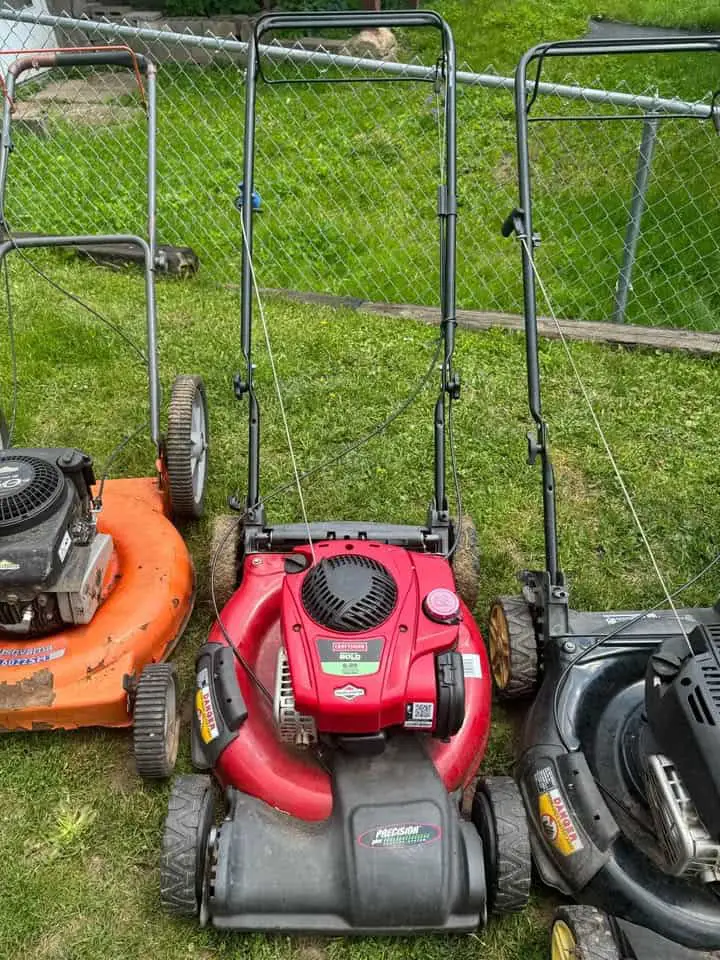How Far Apart to Plant Carrots? How Much Spacing Area Needed?

Are you ready to grow the juiciest, most flavorful carrots of your life? Then pay close attention, because the secret to success lies in knowing exactly how far apart to plant them!
Do you want to find out how far apart to plant carrots and understand why the planting distance is important? In this post, we’ll dive into the science behind carrot spacing and answer the question, “How much space do carrots need?”.
Furthermore, it will explain the factors that need to be taken into account in order to get the best results in your garden.
So grab your gardening gloves, and let’s get started!
The Importance of Proper Spacing When Planting Carrots
Growing carrots requires a proper understanding of the ideal spacing between plants. By leaving enough space between plants, you can make sure that the carrots have enough room to grow.
This keeps them from getting too crowded, which can lead to stunted growth, disease, and pests. Carrots also need enough sunlight to grow properly, and too-close spacing can result in shade, reducing the overall yield.
Factors That Influence the Space Required
Carrots need different amounts of space depending on things like the type of carrot, the type of soil, how it grows, and how fertile the soil is. The main things that affect how much space you need to grow carrots are the size of the carrot when it’s fully grown and how the plant grows.
Each variety of carrot has unique growth habits and root structures, affecting the amount of space needed for healthy growth. Some varieties have roots that are more tapered, while others have roots that are wider and flatter and need more room in the soil.
Soil type also plays a role in the amount of space required for growing carrots. Heavy clay soil can make it hard for roots to grow, so plants need more space between them. Lighter, sandier soil, on the other hand, can allow plants to be closer together.
Carrots also grow differently depending on how healthy the soil is. If the soil is healthy, you can plant the carrots closer together, but if it isn’t, you may need to leave more space between the plants.
How Far Apart to Plant Carrots? How Much Space Needed?
Carrots should be planted between 1 and 4 inches apart. This depends on the type of carrot, how it grows, where carrots grow, and and the type of soil.
Carrots should be planted 2 inches apart in rows 12 inches apart. Check the specific variety you’re growing for any special instructions. Large carrots, like Envy Hybrid, require 3 inches between plants.
High plant densities are used when planting carrot plants. If you picture the thickness of a carrot and then picture the carrots under the ground spaced 2 inches apart, it makes sense.
Plant carrots at a rate of 2 seeds per inch at a depth of 1/4 inch. When plants reach about 4 inches high, thin them down to the desired spacing of 2 inches apart.
To thin plants down, use garden shears and cut weenie-looking or too tightly spaced carrot plants at ground level. Don’t pull them out of the ground by hand to avoid disturbing the roots of the plants you want to leave.
Carrot Plant Density vs. Yields
Here is a scientific paper about how planting density affects carrot yields. It was published by the International Society of Horticultural Science (ISHS).
Carrots were planted with different spacings: in rows 2, 3, 4, and 6 cm; and between rows 10, 15, 22, 5, 30, and 45 cm. These distances meant that there were anywhere from 37 to 500 carrot plants per square meter. 1 meter squared is equal to around 10 square feet. This is what they found.
A population of 111 or 222 plants/m2 gave the highest and most uniform dry weight yield and the highest yields of roots suitable for pre-packing (2–4 cm).
This is similar to the carrot plant density recommended in square foot gardening practices.
Square Foot Gardening With Carrots

Square-foot gardening is an intensive form of gardening that strives to make the best use of garden space. Square footage is often made obvious with wood trim, spaced metal fencing, or irrigation hose that physically divides the bed into square feet.
In square foot gardening, row spacing is thrown out and in-row spacing is used to figure out approximately how many of a given vegetable or fruit you should plant in a square foot.
Carrot plants and some other examples are in the table below. This calculator made by the University of Minnesota can be helpful.
| Plant |
| #Raised Beds |
| #In-Ground |
| Baby Leaf Spinach | 32 | N/A |
| Carrots | 16 | N/A |
| Turnips | 9 | N/A |
| Beans | 6 | N/A |
| Celery | 4 | N/A |
| Lettuce Head | 2 | N/A |
| Peppers | 1 | N/A |
| Melon | 2 squares per plant | N/A |
What I like about square-foot gardening is how easily you can see unused spots in the garden and what you can fill them with.
Plant Density and Yields
Plant density generally works like this. Increased plant density—more plants in the same space—leads to greater overall yields by weight, up to a point.
When plants get too tight, the competition for water, nutrients, and sunlight gets too high, which leads to poor plant development. Another general rule of plant density is this: With higher plant density, individual plants yield smaller fruits and vegetables. So carrots spaced very tightly together will produce smaller carrots come harvest time.
A good and interesting example is the ear of corn on a stalk. Corn is an important crop, and farmers have studied plant density and yields on it thoroughly. What’s fascinating is that corn stalks in fields are so closely spaced that they typically produce only one ear of corn per stalk.
However, corn plants on the edges of fields will regularly have more than one ear because they have more access to water, nutrients, and sunlight.
Commercial Carrot Plant Spacing
Seminis, a large commercial seed distributor, lists different carrot spacings for different types of carrots.
Farmers will use different carrot plant densities depending on how they want to market the carrots. For example, fresh carrots or sliced frozen (processed) carrots will be spaced differently.
Farmers will also use different spacings depending on the machinery they have to harvest.
- Processing Carrots (dicing) – 10-15 seeds per 12″, 180-250k plants per acre, 1 lb. of carrot seed per acre
- Early Cello or Jumbo Carrots – 16-18 seeds per 12″, 300-350k plants per acre, 1-1.5 lbs. of carrot seed per acre
- Main Season Cello Carrots – 20-25 seeds per 12″, 350-450k plants per acre, 2-2.5 lbs. of carrot seed per acre
- Slicer carrots – 20-30 seeds per 12″, 450-550k plants per acre, 2.0 lbs. of carrot seed per acre
- Cut-and-Peel- 60-80 seeds per 12″, 1.1-1.3 million plants per acre, , 4-6 lbs. of carrot seed per acre
How Many Carrots To Plant Per Container
To plant carrots, use a container that is at least 12 inches deep and give carrots 1.5 gallons of dirt per container. With a 3 gallon container, plant 2 carrot plants; with a 5 gallon container, 3 carrot plants; and so on. Using a container, it is easy to count how many carrots one container produces.
How Far Apart To Plant Carrots in a Raised Bed
Use a stick or other tool to make a straight line about 1/4 inch deep in your raised bed where you want the row of carrots. Space rows of carrots 12 inches apart. Plant carrot seeds at a rate of about 2 seeds per inch.
Later, thin down to carrot plants spaced 2 inches apart, depending on the variety of carrot. More space between plants will lead to bigger carrots.
How Deep To Plant Carrot Seeds
Carrot seeds should be planted 1/4 inch deep. Carrot seeds are tiny and lightweight. Cover them lightly with dirt and water them in gently. The water will help hold their spacing and provide the moisture they need to germinate. Continue to make sure the soil around the seeds is moist until they sprout.
Planting Carrots in a Small Garden: Distance Tips
Planting carrots too close together can result in stunted growth and decreased yields. In order to maximize your harvest, it’s important to understand the proper spacing for your carrots.
When planting carrots in a small garden, aim for a spacing of 2–3 inches between each seed. This will give each carrot enough room to grow to its full size without competing for nutrients or sunlight.
If you’re planting in rows, try to keep them about 12 to 15 inches apart. This will help make sure the carrots get enough air, which is important for keeping diseases at bay.
Consider the size of the carrot variety you’re planting. Larger varieties will require more space, while smaller varieties can be planted closer together. Additionally, the soil type can impact the spacing required for your carrots. Heavy soils tend to produce larger carrots, so you may be able to plant them closer together than in lighter soils.
When planting the carrots, gardeners should also consider the size of the mature plant, as well as any neighboring plants that may shade the carrots and affect their growth.
If you’re planting in raised beds, you may be able to plant your carrots a little closer together. This is because the soil in raised beds is often well-draining and rich in nutrients, which can help promote healthy growth. However, it’s still important to keep an eye on the size of your carrots and adjust the spacing as needed.
Conclusion
Proper spacing is essential for growing a healthy and productive carrot crop. Overcrowding can lead to carrots that don’t grow as well, diseases, and pests. Carrots that have enough space can grow well, get enough sunlight, and produce a good crop.
When planting carrots, gardeners should think about the type of carrot, how it grows, where the carrots naturally grow, the type of soil, and how fertile the soil is. Also, it’s important to look at the seed packets or other reference materials to find specific tips for the type of plant being grown. By following these rules, gardeners can make sure their carrot crop is healthy, productive, and gives them a good harvest.






